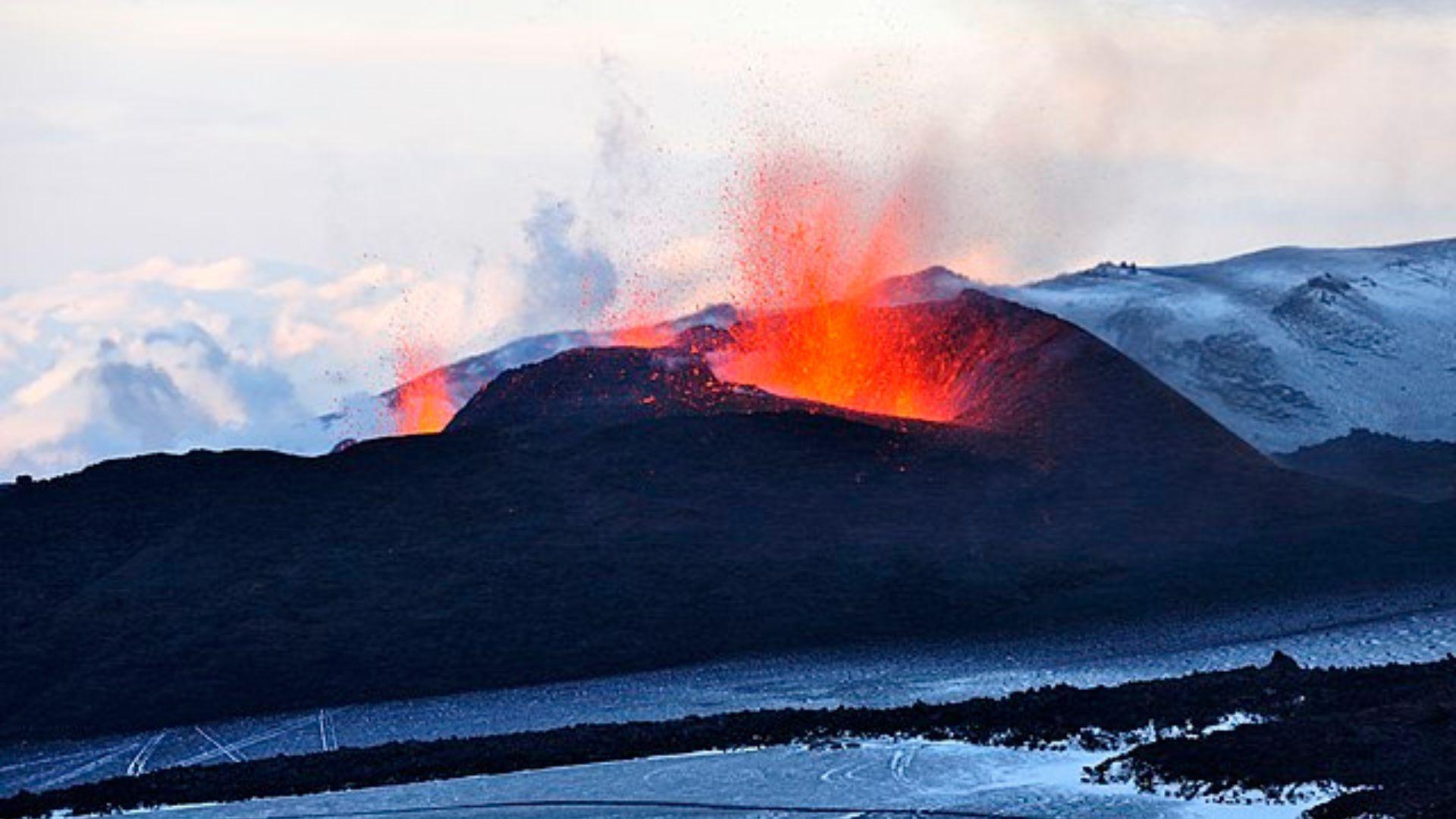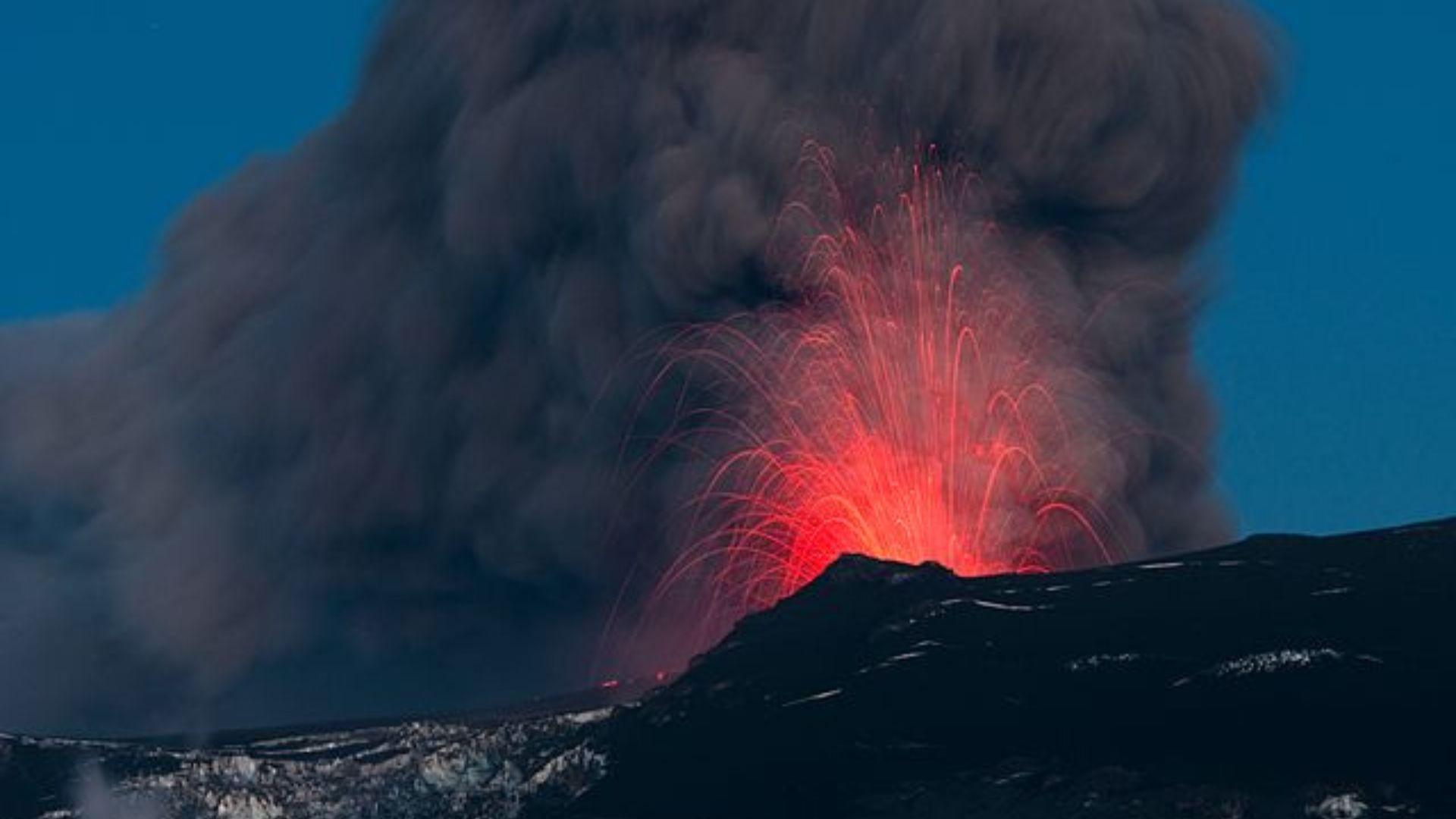Volcano That Remained Dormant for 800 Years Rips Town in Half
In Iceland, a serene fishing village faces a severe natural threat. The Reykjanes Peninsula, historically dormant in volcanic activity for 800 years, woke up in 2020.
The nearby Fagradalsfjall volcano erupted a year later. This sudden change in geological activity has drastically altered the lives of local residents, who now live under the constant threat of another eruption.
Seismic Surge: Prelude to a Potential Eruption
An alarming series of over 24,000 earthquakes within a single day has escalated fears of an imminent volcanic eruption on the Reykjanes Peninsula.

Source: @Karina Michelin/X
The tremors have caused visible destruction in the region, with streets cracking open, buildings being uprooted, and the popular Blue Lagoon tourist destination being shut down as a safety measure.
Imminent Eruption Warning Issued by Icelandic Meteorological Office
The Icelandic Meteorological Office has issued a warning regarding a significant possibility of an eruption occurring soon.

Source: @Mishika Singh/X
This alert was based on the observation of 900 tremors in just a few hours. The residents of Grindavik, a town located on the peninsula, are facing a state of high alert due to these geological activities.
Grindavik's Landscape Altered by Deep Fissures
Grindavik, a town in the affected area, has experienced a dramatic transformation. A fissure approximately four feet deep has cut through the town center.

Source: @Marco Kaschuba/X
This geological event has disrupted utilities, with steam emanating from broken hot water pipes, and even caused a local sports center to be elevated on a newly formed mound of earth.
Keilir Volcanic Mountains: A Threatening Spectacle
The Keilir volcanic mountains, located about 25 miles southwest of Reykjavik, have shown signs of significant volcanic activity.

Source: Wikimedia Commons
Experts suggest that the impending eruption could be effusive, characterized by lava fountaining and lava flows. This region, which had been inactive for 6,000 years, is now a center of concern.
The Challenge of Predicting Volcanic Eruptions
Predicting volcanic eruptions remains a complex and uncertain science.

Source: @volcaholic1/X
The situation in Grindavik exemplifies this challenge, with underground magma movements indicating a potential threat to the town. Experts are closely monitoring these signs to predict the possible impact of an eruption.
Memories of Eyjafjallajökull
The 2010 eruption of the Eyjafjallajökull volcano is still fresh in the minds of many Icelanders. That event caused widespread disruption, including the grounding of flights across Europe.

Source: Wikimedia Commons
While experts believe a repeat of such a large-scale event is unlikely, the possibility cannot be completely ruled out.
Volcanic Activity: An Unpredictable Natural Phenomenon
Volcanic eruptions are among the most unpredictable natural events. Iceland’s meteorological authorities acknowledge the difficulty in forecasting these events.

Source: Wikimedia Commons
The best-case scenario would be for the volcanic activity to subside naturally, though current indications suggest that this may not happen.
Emergency Preparedness: Grindavik's New Reality
Residents of Grindavik now live with the constant necessity of being prepared for an emergency evacuation.

Source: Wikimedia Commons
They have been advised to be ready to leave their homes within minutes if an eruption seems imminent, a stark change from their previously peaceful daily life.
Understanding the Power of Volcanoes
The current situation in Grindavik highlights the immense power of volcanic activity. These natural events have the capability to reshape landscapes and disrupt lives.

Source: Wikimedia Commons
The experiences of the residents of Grindavik serve as a reminder of our vulnerability to natural forces.
Uncertain Future for Grindavik's Residents
The residents of Grindavik face an uncertain future due to the ongoing geological instability.

Source: @Firehorse23/X
Their town has already experienced significant changes, and the threat of a volcanic eruption adds to their challenges. This situation has brought a sense of unease and anticipation about what the future may hold.
Community Resilience in the Face of Adversity
Despite the chaos and fear, the community of Grindavik demonstrates resilience.

Source: @Firehorse23/X
Confronted with the possibility of losing their homes and community to a natural disaster, they continue to adapt to their rapidly changing environment. Their situation is a powerful example of human endurance in the face of natural adversity.
